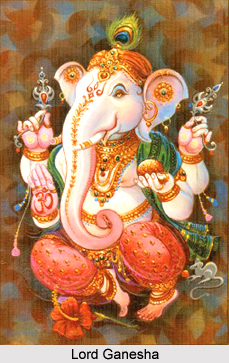 Sankata Nasana Ganapati Stotram (Sankata Nasana Ganesha Stotram) is one of the mantras of Lord Ganesha. It is a Siddhi Mantra and is chanted by His worshippers on a regular basis for attaining favourable results and eradication of obstructions. The recitation of the Sankata Nasana Ganapati Stotram with devotion and faith helps a person to successfully complete important projects. The devotional hymn is instilled with the divine power and blessings of the elephant headed Hindu god. It is also believed that this hymn removes all sorrows from the lives of the devotees.
Sankata Nasana Ganapati Stotram (Sankata Nasana Ganesha Stotram) is one of the mantras of Lord Ganesha. It is a Siddhi Mantra and is chanted by His worshippers on a regular basis for attaining favourable results and eradication of obstructions. The recitation of the Sankata Nasana Ganapati Stotram with devotion and faith helps a person to successfully complete important projects. The devotional hymn is instilled with the divine power and blessings of the elephant headed Hindu god. It is also believed that this hymn removes all sorrows from the lives of the devotees.
The Sankata Nasana Ganapati Stotram is mentioned in the Narada Purana (Naradiya Purana) which is one of the eighteen Mahapuranas recited by the Narada. The recitation of the Stotram begets wealth, knowledge and salvation. It also fulfills the desires of the worshippers. The devotional hymn can be recited as follows-
Narada Uvacha-
Pranamya Sirasa Devam,
Gauri Putram, Vinayakam,
Bhakthya Vyasa Smaren Nithya,
Mayu Kama Artha Sidhaye.
Prathamam Vakra Thundam Cha,
Ekadantham Dveethiyakam,
Trithiyam Krishna Pingalaksham,
Gajavakthram Chathurthakam.
Lambhodaram Panchamam Cha,
Sashtam Vikatameva Cha,
Sapthamam Vignarajam Cha,
Dhoomra Varnam Thadashtamam
Navamam Phala Chandram Cha,
Dasamam Thu Vinayakam,
Ekadasam Ganapathim,
Dwadasam The Gajananam.
Dwathasaithani Namani,
Trisandhyam Ya Paden Nara,
Na Cha Vigna Bhayam Thasya,
Sarva Sidhi Karam Dhruvam.
Vidyarthi Labhadhe Vidhyam,
Danarthi Labhathe Danam,
Puthrarthi Labhathe Puthran,
Moksharthi Labhathe Gatheem.
Japeth Ganapathi Sthothram,
Shadbhir Masai Phalam Labeth,
Samvatsarena Sidhim Cha,
Labhathe Nathra Samsaya.
Ashtanam Brahmanam Cha,
Likihithwa Ya Samarpoayeth,
Thasya Vidhya Bhaveth
Sarvaa Ganesasya Prasadatha.
Ithi Sri Narada Purane Samkashta Nasanam Ganapathi Stotram Sampoornam.
This article is a stub. You may enrich it by adding more information to it. You can send your write-up at content@indianetzone.com




















